A team of professors from Tianjin University of Science and Technology has, for the first time, achieved a "ten-thousand-ton" scale industrial production line!
Straw utilization is a challenge, and scientists from China and abroad are all making efforts. This project has achieved a technological breakthrough, playing a good exemplary role in connecting the industrial chain.
"Applying this technology to the processing of waste materials from the brewing industry, such as sorghum stalks and waste rice husks, can address the long-standing problem of recycling in the brewing industry and solve ecological issues in brewing."
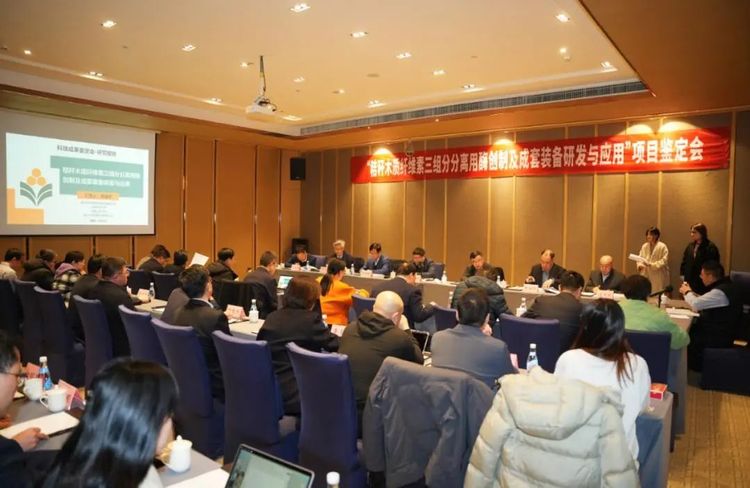
On March 9, the project "Research and Application of Tri-component Separation Technology and Complete Set of Equipment for Biological Enzymatic Depolymerization of Straw Lignocellulose" jointly completed by Shenzhen Zhongnong Jiemei Technology Co., Ltd., Tianjin University of Science and Technology, Qilu University of Technology, and Suzhou Zhongnong Jiemei Technology Co., Ltd. passed the scientific research achievement appraisal organized by China National Light Industry Council.
technical level: internationally leading
The experts of the appraisal committee unanimously agreed that the project has a highly innovative technical approach and a high level of equipment integration, reaching an internationally leading level in the field of efficient separation and high-value conversion of all components of straw resources, providing important technological support for the upgrade of China's biomass chemical industry.
The project was reported by Professor Lu Fuping from Tianjin University of Science and Technology. The project leader, Zang Lihua, General Manager of Shenzhen Zhongnong Jiemei Technology Co., Ltd., introduced that the project was jointly completed by the team of Professor Lu Fuping from Tianjin University of Science and Technology. The project uses enzyme catalysis technology to replace traditional chemical and physical treatment technologies, and through the independent creation of high-performance core enzymes, it has broken through the bottlenecks in molecular design and intelligent manufacturing and industrial application of lignocellulosic straw depolymerization enzymes. This has improved the utilization rate of straw, reduced the amount of straw burning and the use of chemical reagents, decreased pollutant emissions, and achieved the recycling of resources, realizing a win-win situation for economic and ecological benefits.
Experts stated that the project team, through years of research, has broken through key enzymatic hydrolysis technology, solving the worldwide problem of using biological enzymes to separate straw components.
According to the information, this scientific research project, based on the structural characteristics of lignocellulosic straw and the properties of enzyme molecules, has developed different combinations of enzymatic depolymerization systems. After enzymatic catalytic reactions through different processes, the product quality exceeds the technical indicators specified in national standards, and the enterprise efficiency is significantly increased.
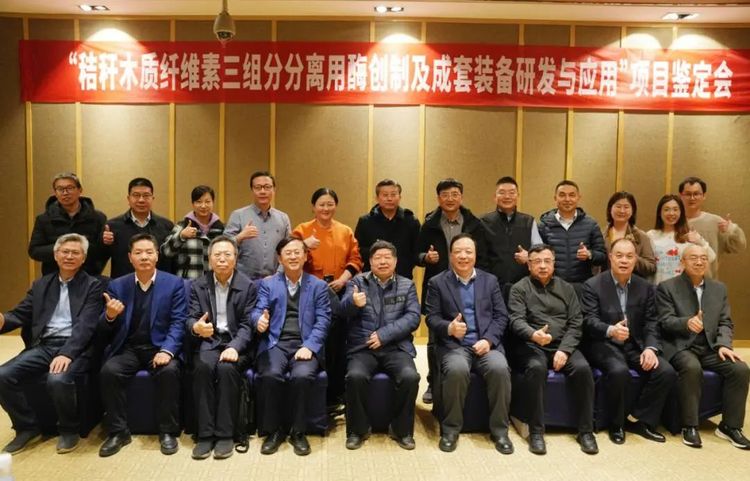
In addition, this scientific research project has for the first time completed an industrial test production line for the separation of three components from ten thousand tons of straw raw material annually, achieving a "0 to 1" breakthrough in original technology from laboratory research to industrial level. It possesses fully independently developed intellectual property rights for innovative enzymes and enzyme catalytic reactors for the deconstruction of lignocellulosic straw. Compared with traditional chemical production processes, the energy (steam, electricity) consumption of this industrial test line is reduced by more than 70%, water saving is over 80%, and the utilization rate of raw materials is close to 100%.
The expert appraisal committee unanimously agreed that the scientific research project achieved core innovations in three major aspects: the creation of new types of lignocellulose degrading enzymes, the development of a complete set of enzymatic reaction equipment, and the verification of enzyme hydrolysis processes and equipment at a ten-thousand-ton industrial scale. Through an all-chain innovation of "enzyme-equipment-process", the scientific research project addressed the industry pain points of insufficient component disassembly in straw utilization and low product added value. The China National Light Industry Council evaluated that the results of the project "provided a Chinese solution for biomass refining, which is of strategic significance for achieving the 'dual carbon' goals."
Committee Chairman, academician of the Chinese Academy of Engineering, and former president of Jiangnan University, Chen Jian, gave high praise to the project: "This project is based on the major needs of national development, solving the 'bottleneck' problems of resources and industry, promoting green, low-carbon, and circular development, achieving resource recycling, and developing new types of productivity. It is a model with a demonstrative effect and leading role. From an industrial perspective, to achieve self-reliance and strength in high-level technology, the first thing is to have industrial autonomy. The significance of this project in terms of replacing imported foreign wood pulp, reducing pollution, and so on, all have significant economic and social value."
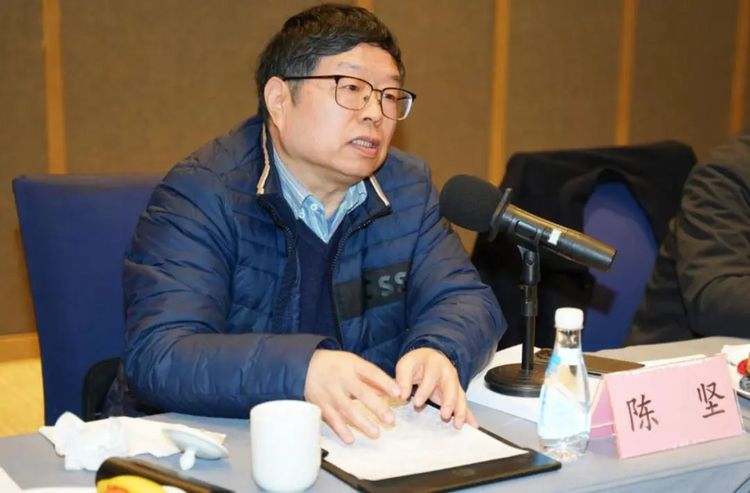
"Technological innovation and multi-sector collaboration are the keys to solving the cost issue of enzymes." Chen Jian pointed out that with the development of biologics and enzyme engineering technology, it is now possible to develop more and better enzymes. Through interdisciplinary cooperation, including working with equipment manufacturing companies, a supply chain, capital chain, and value chain can be established. Equipment plays a crucial role in enzymatic technology; how to integrate it well and promote overall technological advancement requires using an engineering mindset to improve the project advancement concept system, building a national model of strength. "
Chen Jian stated that the project should further expand its application scenarios, integrate into the national development strategy and the large industrial cluster of the national ecosystem, focus on solving industrial production problems, and connect equipment and process production to form a complete ecological industrial chain.
Vice President of the Tianjin Institute of Industrial Biotechnology, Chinese Academy of Sciences, Sun Jibin pointed out: "If high-end wood pulp substitutes can be made, it will not only make better use of straw but also solve the dependence on imports. The overall raw materials are fully utilized, with no waste, all valuable, and commercialization is very promising. Tasly and Guotai Digital Liquor Industry, leveraging their own advantages, will play a significant role in promoting the realization of large-scale production of this technology and the intelligent transformation of the entire industry chain."
Shenzhen Zhongnong Jie Mei Technology Co., Ltd. has utilized synthetic biology to develop a highly active biological enzyme for the efficient enzymatic degradation of grain straw, solving a global technological challenge in the scientific utilization of crop straw. This provides new technology for the green and high-quality use of agricultural grain straw, pioneering new avenues for the advanced development of China's agricultural grain straw, and offering a comprehensive solution with independent intellectual property rights to the market.
Multiple benefits: Maximizing the potential of straw
Agricultural products, half in seeds, half in straw. However, while both are resources, seeds are regarded as treasures by people, while straw is often discarded. Currently, the theoretical resource amount of straw in our country is 977 million tons, and the collectible resource amount is 737 million tons, indicating a rich straw resource. At present, straw is mainly utilized through methods such as returning to the field, power generation, pressing into boards, and organic fertilizers, which have issues of low economic benefits, severe industrial raw material pollution, high energy consumption, and large water usage. Therefore, using enzyme catalysis technology to replace traditional chemical and physical processing technologies has become an important way to achieve green utilization of straw and efficient clean production.

How to better utilize straw? An expert said: Lignocellulose is the core component of agricultural and forestry waste such as straw, and the key to its high-value utilization lies in the efficient separation of cellulose, hemicellulose, and lignin (the three components). However, traditional processes suffer from low efficiency in component separation and easy condensation of lignin, leading to serious resource waste. Therefore, the method of straw utilization must achieve a green transformation.
The scientific research project, through a series of enzyme-catalyzed reactions, can ultimately convert straw into products such as fiber and humic acid. Humic acid is an organic matter that, when applied to fields, can inhibit weed germination while promoting crop growth, with the effect of increasing yields. The fiber product—wood pulp—has always been an important raw material for industrial production.
An industry expert said that the papermaking industry is an important basic raw material industry, but China's paper industry faces a serious shortage of wood pulp. Due to limited domestic forest resources, the self-sufficiency rate of wood pulp production in China is low, and the dependence on imports has always been high, with overseas giants holding the pricing power.
Therefore, for the wood pulp production field, the utilization of agricultural residues is an important direction. This scientific research project, through enzymatic catalytic reactions, can ultimately convert straw into fiber products, which not only helps to solve the problems of low economic benefits and pollution from straw, but also has significant and far-reaching implications for national economic security and technological self-reliance.
Through years of technical breakthroughs, Shenzhen Zhongnong Jiemai Technology Co., Ltd. has made significant progress in straw utilization. A relevant person in charge of the company stated that the three components of plant straws such as wheat straw, rice straw, cotton, and corn (fiber, hemicellulose sugar, and lignin) can be efficiently separated. The entire process adopts biocatalytic technology, without the use of chemicals, ensuring no chemical residues in the products. The production process uses clean production techniques, which are green biomanufacturing technologies strongly promoted by the country, producing no black liquor and meeting national environmental protection requirements.
From the perspective of environmental benefits, firstly, it reduces straw utilization pollution. The project results can effectively improve the utilization rate of straw, reduce the amount of straw burning, reduce the use of chemical reagents, and decrease pollutant emissions. Secondly, it promotes the recycling of resources. The separation products of straw lignocellulose can be used to produce downstream products of bio-based fibers, achieving the recycling of resources and promoting sustainable development. At the same time, the enzymatic hydrolysate after separation, as an organic fertilizer substitute, promotes agricultural yield and income increase, realizing a win-win situation for ecological and economic benefits.
From the perspective of social development benefits, on one hand, the implementation of the project drives the development of rural straw collection, transportation, and other industries, promoting rural economic development and rural revitalization, and advancing sustainable rural development. On the other hand, the results of the project promote the technological upgrading of the comprehensive utilization industry of biomass resources, enhancing the overall competitiveness of the industry, and providing strong support for achieving the national "dual carbon" goals and the sustainable development strategy, possessing significant social significance and strategic value.
According to the information, the technology has undergone more than a decade of arduous experiments from the initial research concept to its final industrialization. Among these, as a strategic partner of Shenzhen Zhongnong Jie Mei Technology Company, Tasly Group and Guotai Digital Intelligent Liquor Group provided significant support in promoting the research project from the laboratory to a ten-thousand-ton scale, assisting the research team in perfecting the industrialization design plan.
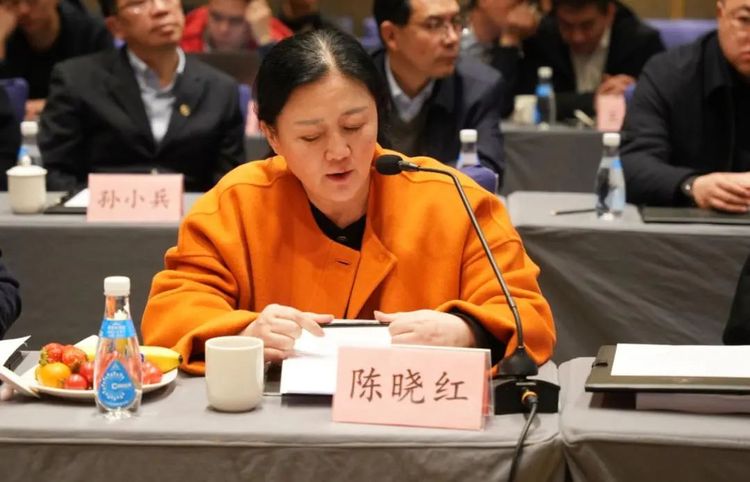
Shenzhen Zhongnong Jie Mei Technology Co., Ltd. Chairman Chen Xiaohong stated that the project has threefold benefits. First, it significantly reduces carbon emissions by replacing traditional high-temperature and strong alkali cooking process technology with green and low-carbon biocatalytic enzyme technology, resulting in significant carbon reduction performance. Second, it substitutes imports and saves foreign exchange. One of the products of this technology, bio-based fibers, can replace hardwood pulp, reducing the import of wood pulp and decreasing the use of foreign exchange. Third, it replaces chemical fertilizers with organic fertilizers. The process can produce more than 60% of the straw's weight as bio-based fibers and over 30% as soluble humic acid organic fertilizer, providing an effective way for organic fertilizers to replace chemical fertilizers.
Heading towards "Qian": "Straw" can increase efficiency
Document No. 2 [2022] of the State Council states: "Leverage the advantages of the origin and main production area of soy sauce-scented liquor in the Chishui River Basin, and build a nationally important liquor production base." This has pointed out the direction and path for the high-quality development of the liquor industry in Guizhou.
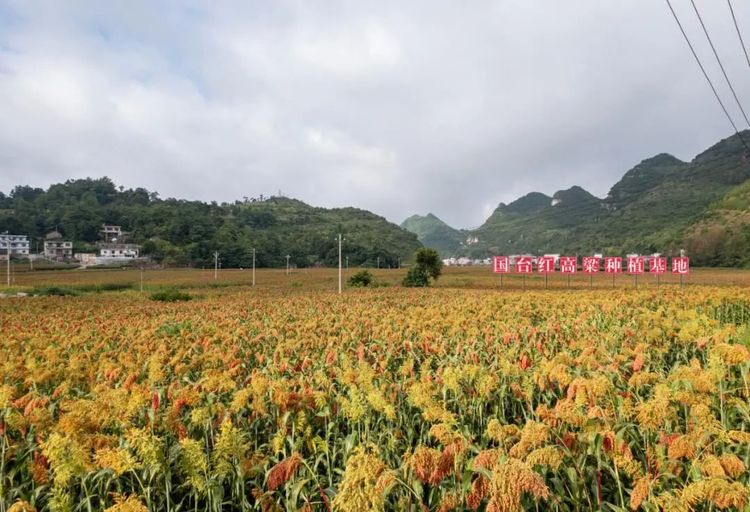
As the second largest winery in Maotai Town, Guotai Digital & Intelligent Liquor Group has taken the initiative and acted proactively. It is reported that Tasly Group, Guotai Digital & Intelligent Liquor Group, and Shenzhen Zhongnongjie Mei Technology Co., Ltd. have reached a strategic cooperation agreement. They have initiated research and development on the sorghum stalks specifically used for soy sauce-scented liquor brewing and the waste straw from the fermentation of Daqu, and have achieved research results. This is expected to solve the problem of waste recycling in the liquor industry and address the ecological challenges of the brewing industry.
The 2025 Guizhou Provincial Government Work Report deployed the key tasks for this year. In the section on solidly promoting the comprehensive revitalization of the countryside, it proposed "increasing the resource utilization of agricultural waste, with the resource utilization rate of livestock and poultry manure and the comprehensive utilization rate of straw stabilized at over 80% and 86%, respectively."
Taking sorghum stalks as an example, the application of this technology has great potential. According to data released by the Zunyi City Red Sorghum Industry Association, the area of land in Zunyi that can be consistently used for sorghum cultivation is 2 million mu. Among this, following the requirements of organic production and crop rotation, the area available for organic sorghum cultivation each year is 1 million mu.
According to the data, the weight of straw produced per mu of red sorghum can be estimated at about 1.5 tons. Based on this data, the annual straw production in Zunyi is approximately 1.5 million tons. Of course, there are also yields of wheat straw, rice straw, corn straw, and so on. If this technology can be promoted, the market prospects are promising. If applied in the agricultural field, it will further help farmers increase their income and promote rural revitalization.
Similarly, in the industrial field of liquor brewing, this technology will also play a significant role. Industry experts say that in the brewing of soy sauce-scented liquor, there are issues such as high viscosity and difficulty in decomposing lees, and the inability to naturally process sorghum stalks and waste rice husks. This technology achieves full component utilization of sorghum stalks and waste rice husks, employing enzymatic rice husk separation technology, pulp, and fine feed production. By turning waste into treasure, it has changed the long-standing problem of waste recycling in the brewing industry, solving the environmental pollution problems faced by the brewing industry.
More notably, breakthroughs in straw-to-pulp technology will also provide strong technical support for the development of the papermaking industry. In conjunction with the packaging supporting the Guizhou liquor industry, there is also ample room for development. Data shows that in recent years, Guizhou has established multiple liquor packaging supporting industrial parks, with the provincial packaging supporting rate rapidly increasing and stabilizing at around 80%, and the output value of liquor packaging reaching billions of yuan.
An industry expert said that wine packaging requires a large amount of wood pulp. Introducing straw lignocellulose biotechnology in Guizhou is expected to enhance Guizhou's technological voice in the production of raw materials for wine packaging, improving the autonomy and controllability of the industrial chain. In addition, local production of pulp can reduce logistics costs and help Guizhou develop supporting industries for winemaking.
For a long time, the company has effectively integrated ESG management requirements into the entire business process, incorporating green and intelligent brewing into its development strategy, continuously improving the environmental protection management system, ensuring that all types of pollutants are discharged up to standard, and promoting the intensive, green, and sustainable development of the industry through innovative intelligent brewing. During the 14th Five-Year Plan period, the company plans to advance energy conservation and emission reduction through innovative intelligent brewing, improve the comprehensive utilization rate of resources, and reduce the carbon dioxide emissions per unit product by more than 8% compared to traditional brewing methods.
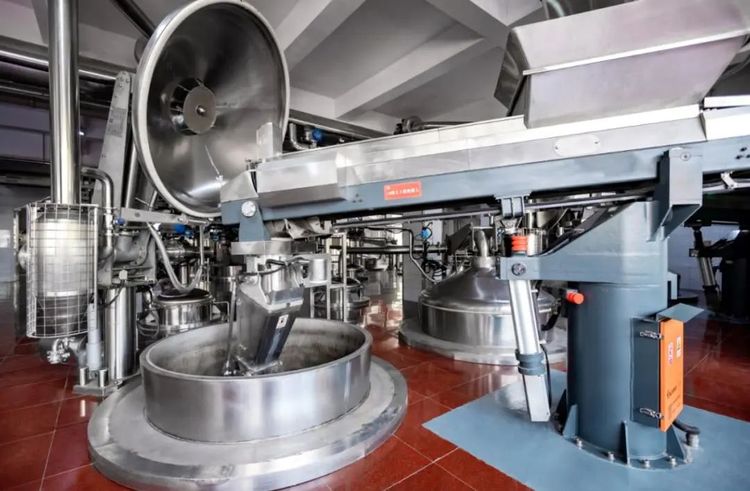
And the in-depth cooperation between Tasly Group, Guotai Digital Intelligent Liquor Group, and Shenzhen Zhongnongjie Mei Technology Co., Ltd. will further address the ecological challenges of the brewing industry.
Tasly founder and Guotai Digital Intelligent Liquor Group honorary chairman Yan Xijun stated that he believes the domestic research and industry sectors will take this appraisal as a starting point, contributing new strength in China's agricultural modernization, in turning agricultural waste such as straw into valuable resources, resource regeneration and recycling, and high-quality, high-efficiency utilization of straw. If the pilot production line is promoted nationwide, forming an industrial chain with upstream and downstream sectors, and integrating into ecological industrial parks, it will create enormous social and economic benefits for Chinese agriculture.
It is understood that the scientific research project will continue to plan for development in the next step, making the downstream industry more valuable and forming a high-value industrial chain to serve society. Firstly, the scientific research project will further develop digital standards for processes, promoting further improvements in workshop production, achieving intelligence and industrialization, and providing a reference for the formulation of unified national standards in the future; secondly, the scientific research project will further grasp overall planning, forming a closed-loop, ecological, and unitized industrial park-style industrial model, from source entry to key enzymatic technology to downstream products, forming three major industries, truly realizing the industrial development of high-value-added agricultural technology, and promoting the upgrading and advancement of the agricultural industry.
【Copyright and Disclaimer】The above information is collected and organized by PlastMatch. The copyright belongs to the original author. This article is reprinted for the purpose of providing more information, and it does not imply that PlastMatch endorses the views expressed in the article or guarantees its accuracy. If there are any errors in the source attribution or if your legitimate rights have been infringed, please contact us, and we will promptly correct or remove the content. If other media, websites, or individuals use the aforementioned content, they must clearly indicate the original source and origin of the work and assume legal responsibility on their own.
Most Popular
-

List Released! Mexico Announces 50% Tariff On 1,371 China Product Categories
-

Nissan Cuts Production of New Leaf EV in Half Due to Battery Shortage
-

New Breakthrough in Domestic Adiponitrile! Observing the Rise of China's Nylon Industry Chain from Tianchen Qixiang's Production
-

Dow, Wanhua, Huntsman Intensively Raise Prices! Who Controls the Global MDI Prices?
-

Mexico officially imposes tariffs on 1,400 chinese products, with rates up to 50%






